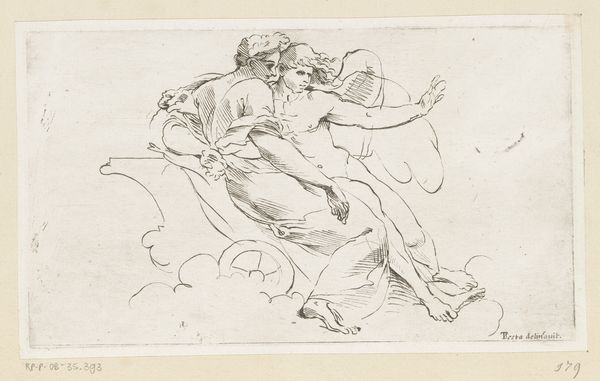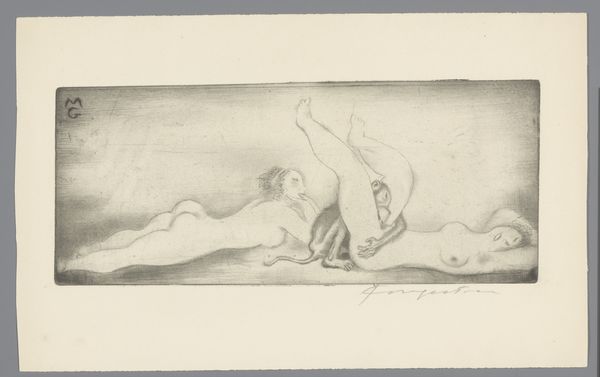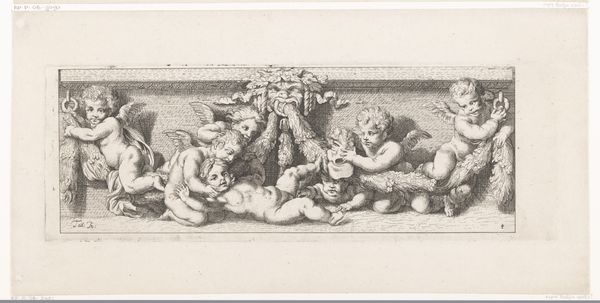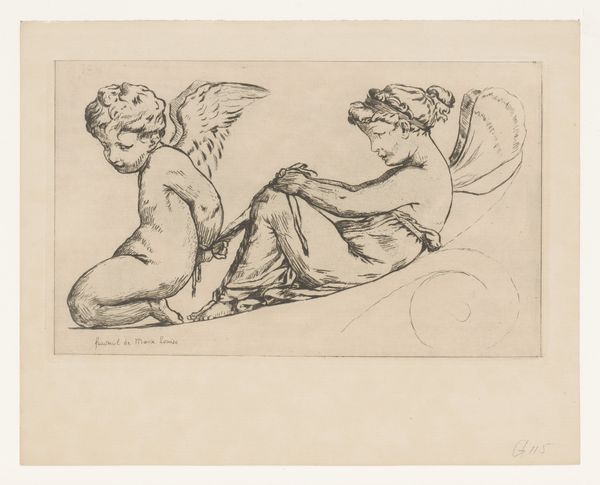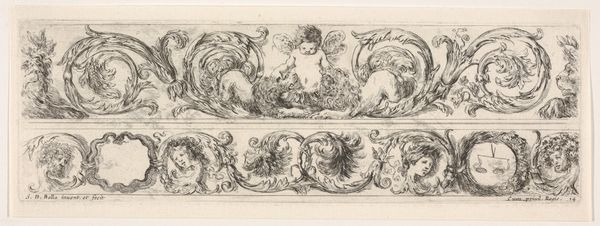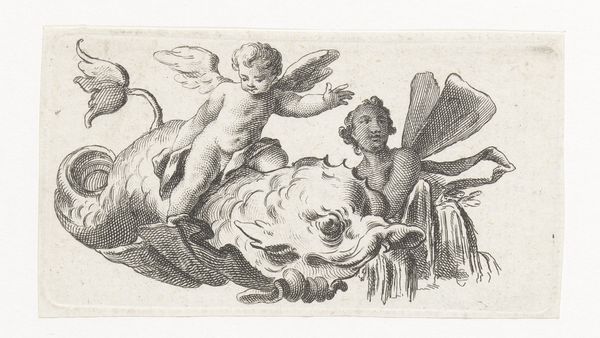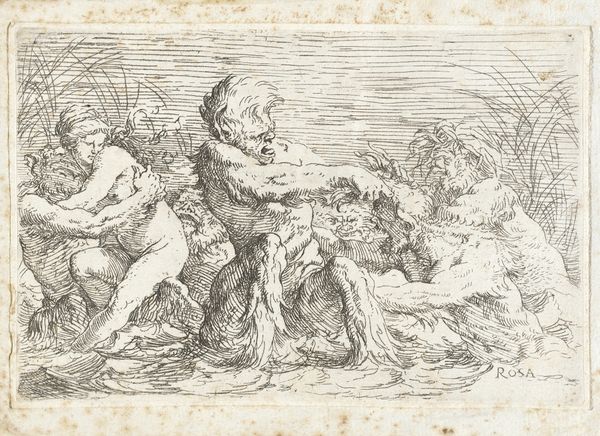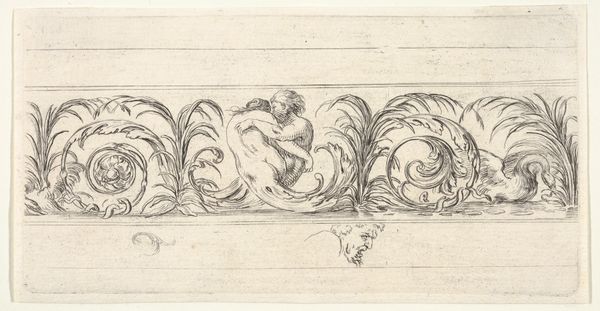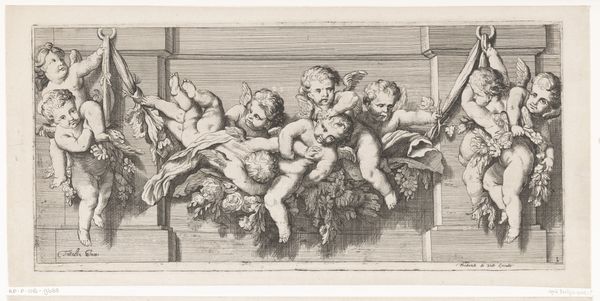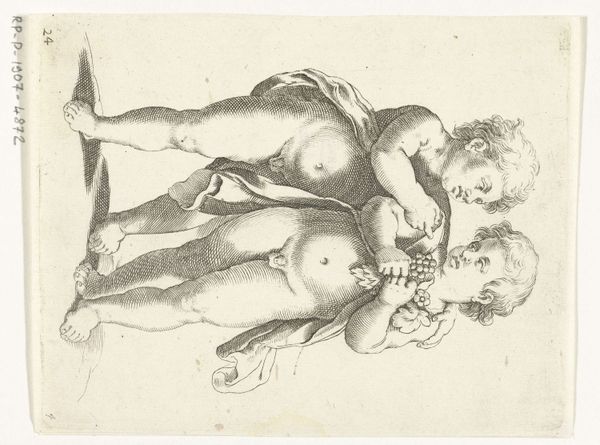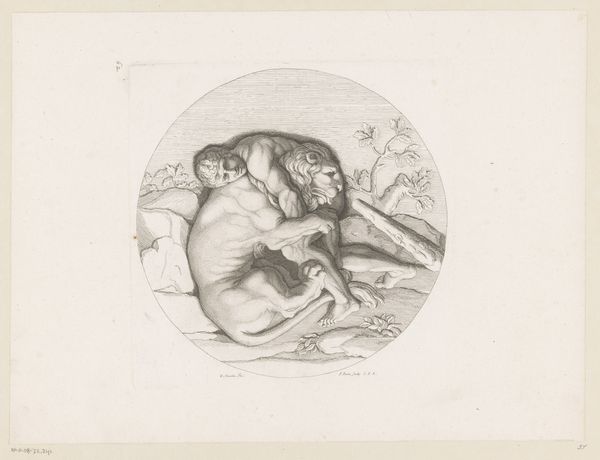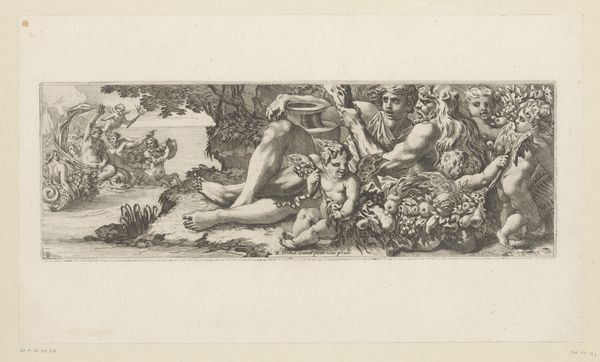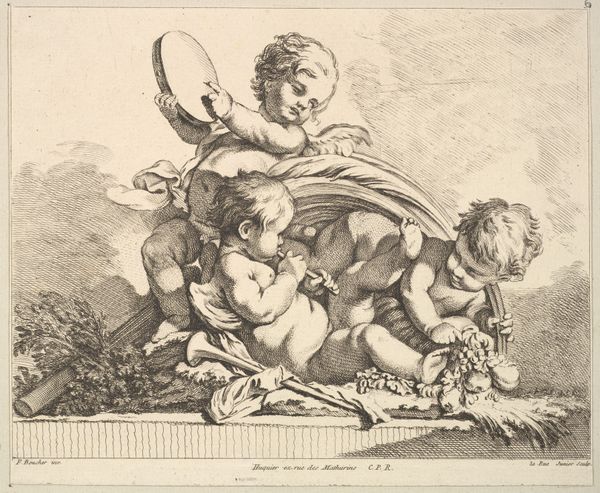
Plate 3: two infants standing in the water at center with their legs as scrollwork, below three small sketches of heads, from 'Friezes, foliage, and grotesques' (Frises, feuillages et grotesques) 1638 - 1643
0:00
0:00
drawing, print, etching
#
drawing
#
allegory
#
baroque
# print
#
etching
#
figuration
#
genre-painting
#
italian-renaissance
Dimensions: Sheet: 2 9/16 × 4 15/16 in. (6.5 × 12.5 cm)
Copyright: Public Domain
Curator: Here we have "Plate 3: two infants standing in the water at center with their legs as scrollwork, below three small sketches of heads, from 'Friezes, foliage, and grotesques'," an etching by Stefano della Bella, dating from between 1638 and 1643. Editor: It strikes me immediately as something quite ornate and playful. The combination of children with this elaborate scrollwork feels like it’s on the verge of becoming cartoonish, but retains a baroque sensibility. Curator: Della Bella was prolific in printmaking. Considering that, and the title indicating it’s part of a series, it’s fair to assume that this piece was likely meant as inspiration for artisans creating decorative objects or architectural details. We see similar ornamental prints circulated widely and then embodied within various crafts and designs of the time. Editor: Absolutely. And looking at the lines, the artist is playing with the texture of the etching. Consider how this level of detail and the delicate lines required very specific expertise and tools. The dissemination of these kinds of prints highlights not just artistic skill, but also advancements in production and distribution, shaping aesthetics more broadly. Curator: Yes, the subject itself participates in a well-established artistic language. The cherubic figures, the reference to water... it evokes classical imagery in a way that was typical of Italian Renaissance and Baroque periods. Artists often drew inspiration from ancient mythology and symbolism. And here at the Met, the display of this drawing reaffirms those canons, educating the public on the classical tradition through this easily reproduced medium. Editor: That’s where I pause a little. The reproductive quality of etching is critical here. This work's influence depends on its dissemination to different social groups and workshops; it doesn't accrue cultural value simply by being showcased in the Met, even if that legitimizes it. Its real cultural work took place within artisan communities where the image helped to organize production. Curator: Point taken! Seeing it this way helps me think more clearly about how an image works as a template. Thanks for that observation. Editor: And thank you for pointing to the classical echoes. They really do demonstrate the long shadow cast by classical and renaissance culture. It’s fascinating how prints like this helped keep it in play, quite literally!
Comments
No comments
Be the first to comment and join the conversation on the ultimate creative platform.
